Most of the visible life on this earth can be divided into two different categories – flora and fauna. Of them both, flora consists of plants and trees, whereas fauna consists of our animals. But flora has been on this planet well before our origin.
The lush green vegetation has been a part of this earth even before the first fauna came into existence, i.e., for billions of years. Though they are immobile, like the fauna, they are found in places where it is difficult for us humans to reach.
A lot of credit for the well-being of the planet goes to the fauna. They control precipitation, keep oxygen and carbon dioxide in the air circulating, and give shelter and food to the fauna.
The tree is a specific category of fauna. It is different from the small herbs and the softwood shrubs as it is big, tall, has hardwood, etc. Every tree grows, transforms from an herb to a shrub, and eventually grows into a tree in its growth process. Trees are a lifeline for the world because they can supply more oxygen than herbs and shrubs and serve many other utilities.
The other utilities include wood for shelter and furniture, fire, cooking food, etc. Trees are also a direct source of food for us humans, as many of them provide us with edible fruits.
Like the different uses of trees, there are also different types of tree picture with name, each having unique features that make them. Stand out. Trees hail from the kingdom of Plantae and are divided between a lot of species, genera, and families.
There are so many different species of trees that learning their names would tire you to the core. But the trees can broadly be classified into two categories, i.e., deciduous and evergreen trees
Deciduous Trees
- Deciduous trees are the type of trees that shed their leaves once every year.
- These trees generally come with broadly shaped leaves that further come in different shapes and sizes.
- Deciduous trees shed their leaves in the autumn season in The North American region and the tropical region’s dry season. Once the leaf is shed, new leaves start to come out in the spring season, and the tree picture with name looks more beautiful than ever.
- In a way, the shedding of leaves acts like a renovation for the tree. Some common deciduous trees are oak, birch, maple, etc.
Evergreen Trees
- Evergreen trees, as the name suggests, remain green throughout the year. They do not shed leaves like the deciduous trees, and hence, the leaves are not replaced.
- These trees generally have needle-shaped leaves.
- Evergreen trees generally grow in areas with high snowfall.
- They are also found in tropical areas.
- Some common evergreen trees are pine, spruce, fir, etc.
- Now that we know the two broad categories of trees let us know about some common types of trees divided between them and learn about their striking features that you can look at for easy identification.
Different Types of Trees
Pine Trees
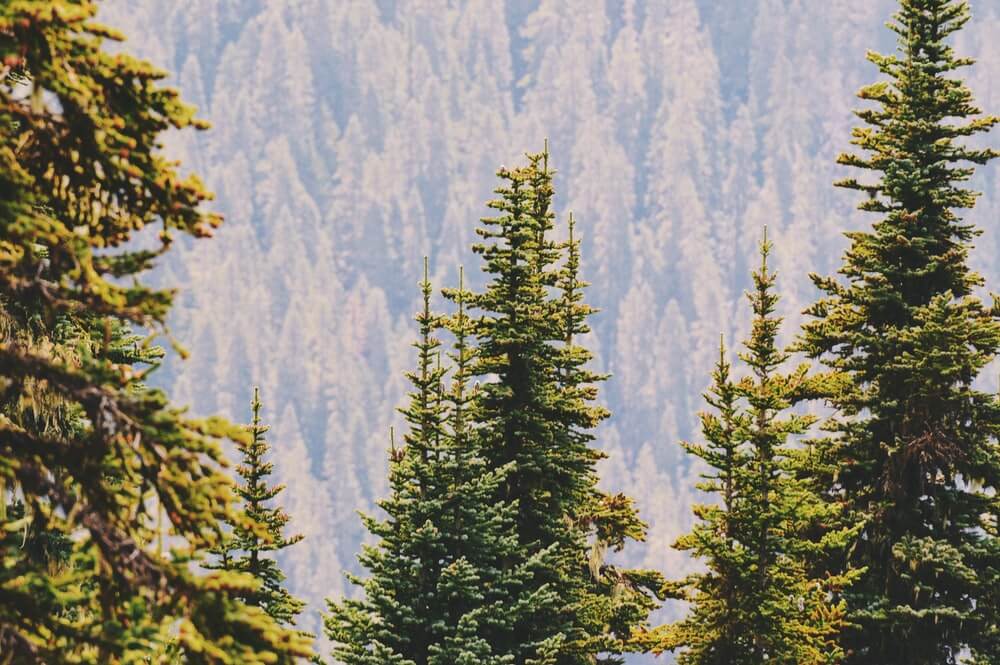
- These are evergreen trees from the Pinus genus, found mostly in cooler areas like the US. Pine trees are known for their needle-shaped leaves, which cluster together.
- A unique feature of pine trees is their long lifespan, with some living for thousands of years.
- They can grow very tall, typically ranging from 50ft to as much as 500ft.
- Pine trees have a distinctly thick and scaly bark and are special because they have both male and female cones on the same tree.
Apple Trees
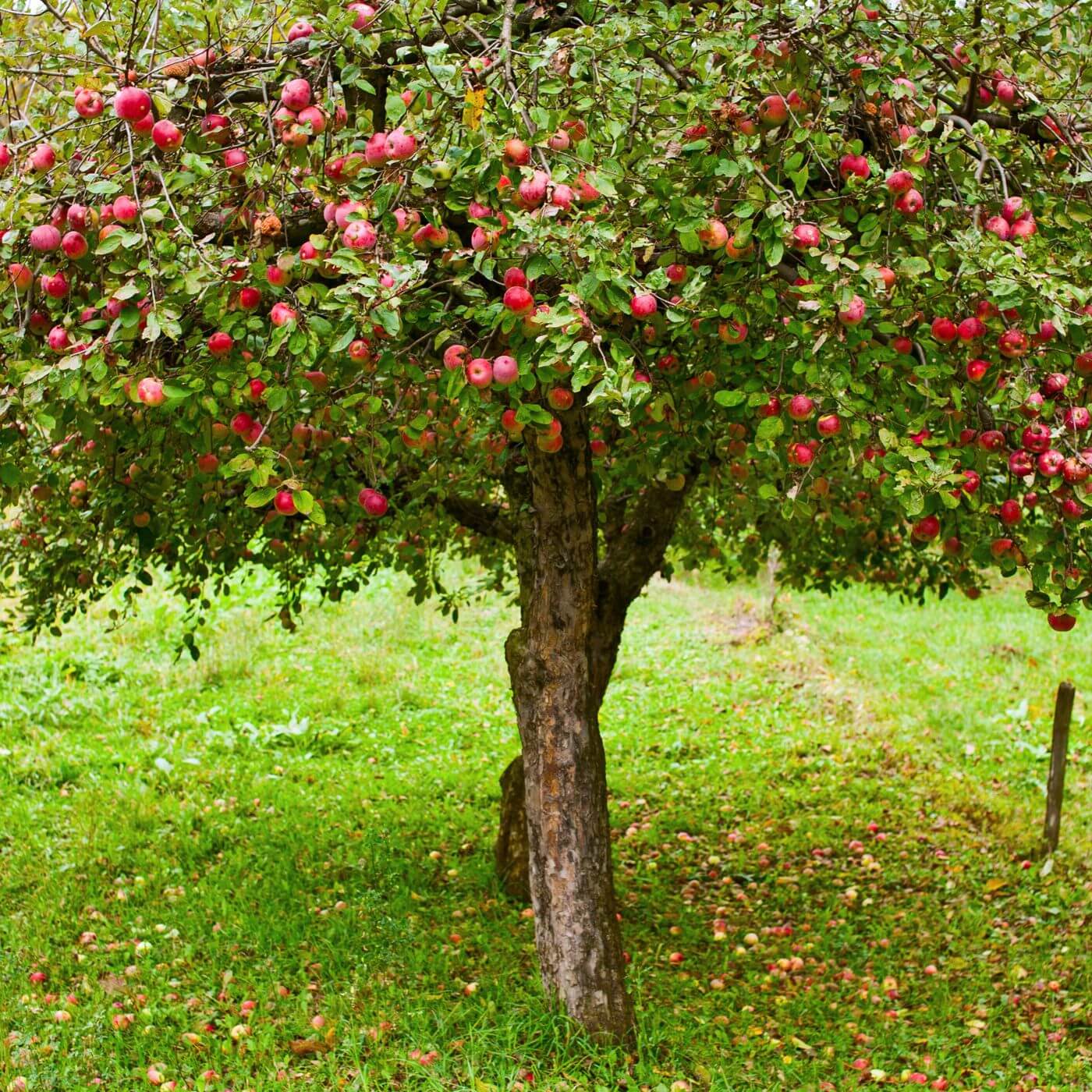
- These deciduous trees are from the Malus genus and are well-known for their tasty apples.
- They originally came from Central Asia and were brought to North America by colonists.
- Apple trees grow up to 15 ft tall when farmed and can reach 30 ft in the wild.
- Their leaves are dark green and oval. In spring, they have white flowers that turn into apples by autumn.
- People also like the wood of apple trees for cooking because it smells good.
Birch Trees
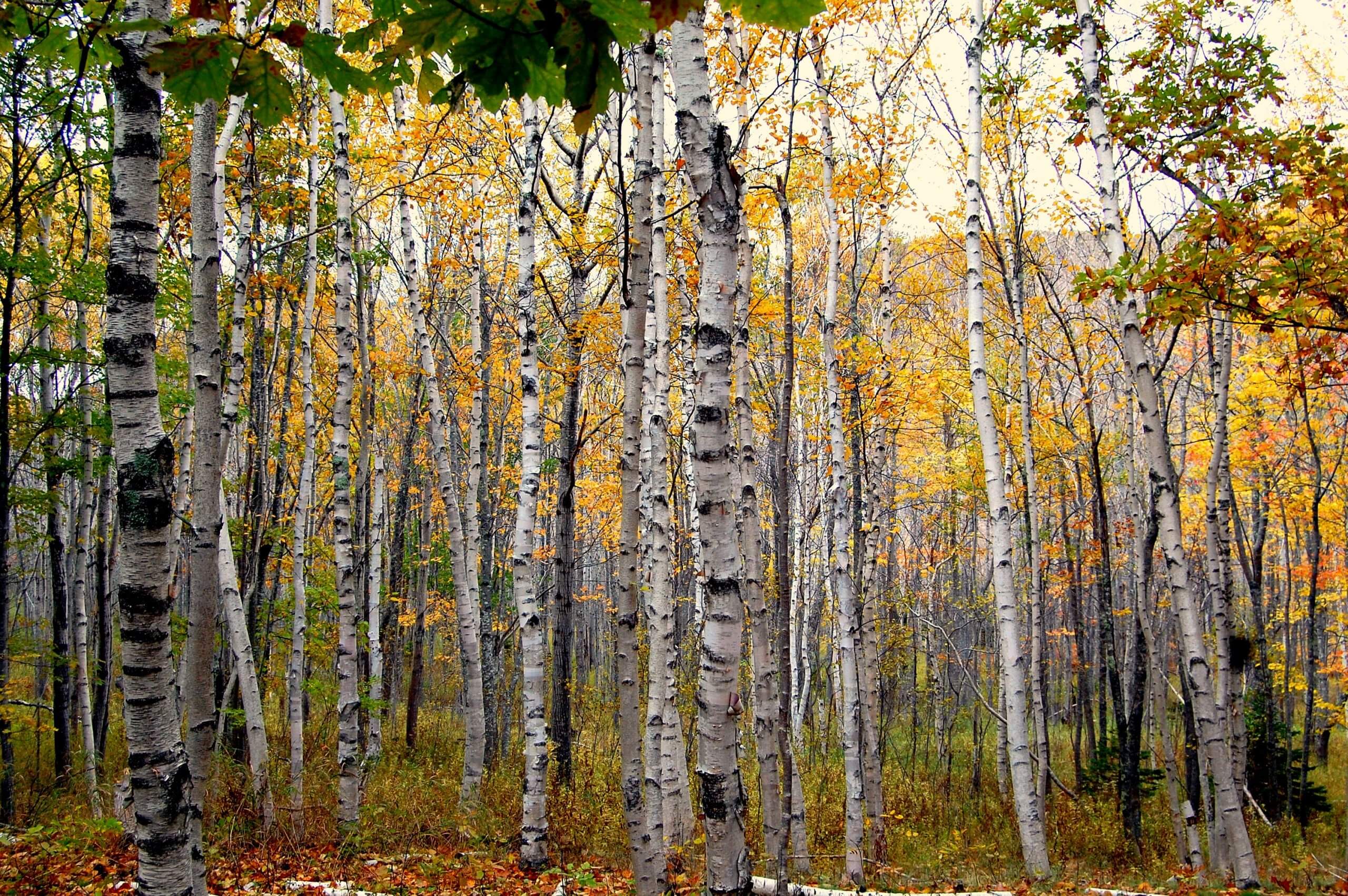
- These deciduous members of the Betula genus, under the Betulaceae family, are notable for their unique bark, typically white or silver in color.
- The texture of birch bark is distinctively papery, a feature that becomes evident upon touch.
- Birch trees are adorned with small, thin, triangular-shaped leaves that dangle elegantly from elongated, drooping branches.
- The hardwood quality of birch makes it a preferred choice for crafting furniture and plywood, adding both utility and aesthetic value to their use.
Maple Trees

- Widely recognized for their presence in Canada and Asia, maple trees are a prominent deciduous species from the Acer genus of the Sapindaceae family.
- Their leaves are uniquely deeply lobed and grow in opposite directions on the branch. The bark of these trees is dark brown with a furrowed texture.
- Maple trees, especially sugar and red maple varieties, are essential for various industries, providing materials for baseball bats and timber.
- However, their most renowned product is the delicious maple syrup, primarily extracted from sugar maples, making them economically valuable.
- The height of maple trees varies greatly, ranging from 33ft to an impressive 150ft.
Cedar Trees

- Cedar trees, part of the pine family and closely related to pines, are evergreen with needle-like leaves.
- They mainly grow in temperate regions, such as the Himalayan mountains and parts of North America.
- Typically, cedar trees reach heights of 120ft, and some varieties even grow taller, up to 180ft.
- Their cones have a distinctive barrel shape, making them easy to identify.
- Cedar wood is known for its spicy-resinous aroma, which is a natural deterrent to moths.
- The bark of cedar trees is another distinctive feature, being thick, rugged, and deeply cracked.
Ash Tree
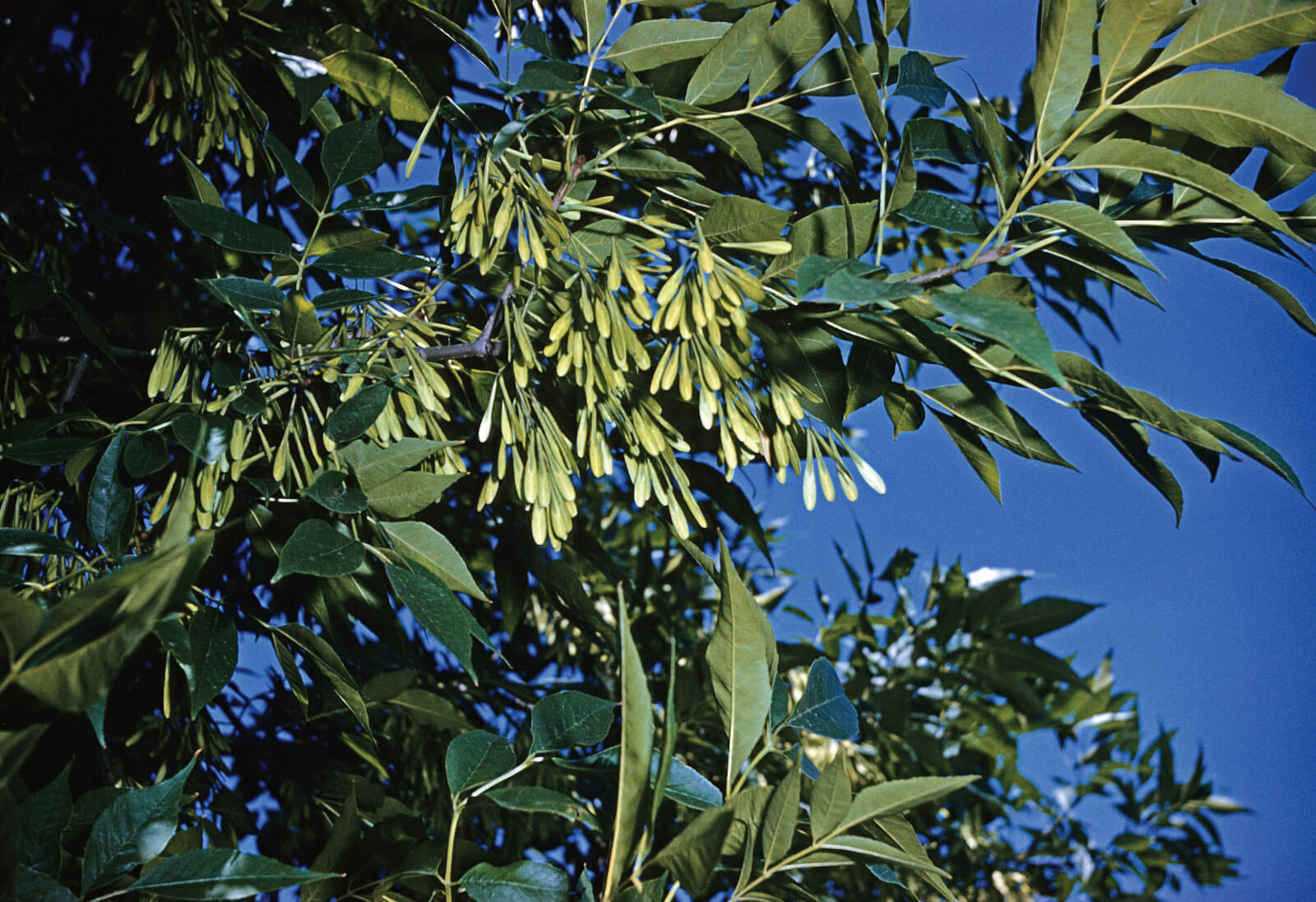
- These are deciduous trees found in places like Europe, Asia, and North America. They are part of the Oleaceae family in the Fraxinus genus.
- When ash trees are young, they have smooth bark. As they grow older, the bark develops shallow cracks.
- Their leaves usually come in groups of five or seven and are placed opposite each other, forming a rounded shape at the top of the tree.
- Ash trees grow to about 40 to 60 ft tall.
- The wood of ash trees is known for being strong and flexible, which is why it’s used to make things like baseball bats and hammer handles.
Oak Trees
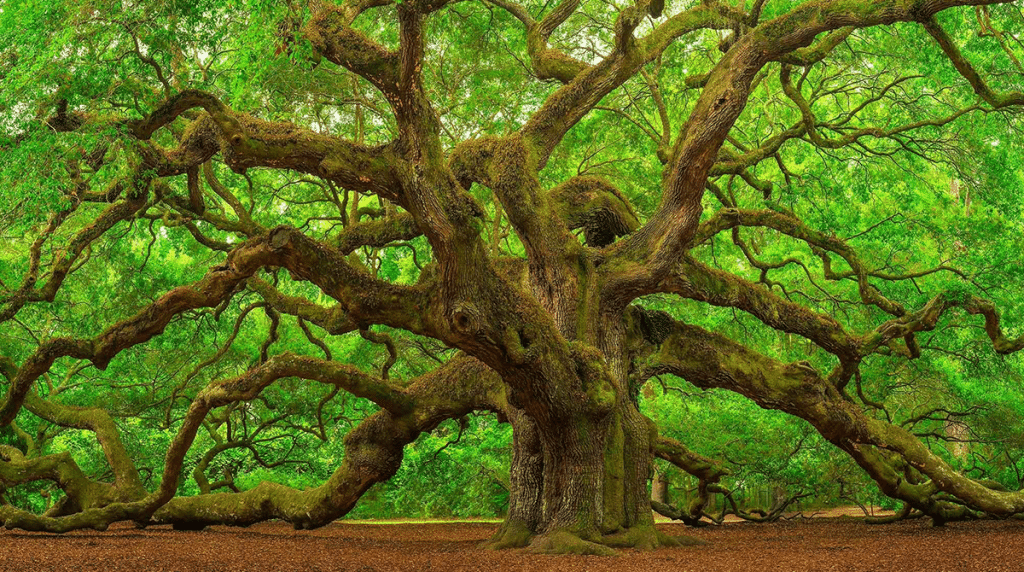
- Oak trees from the Quercus genus are strong and can live for 100 to 300 years.
- They come in two types: ones that lose leaves each year and ones that don’t.
- Their leaves are easy to spot because they have deep cuts and pointy or rounded edges.
- Oaks grow well in places like North America, Europe, and Asia. They can get as tall as 70 ft.
- Oak wood is tough and keeps bugs away because it has a lot of tannins.
- This wood is great for making furniture, floors, ships, and wine barrels, as it adds a nice taste to wine.
Hickory Trees
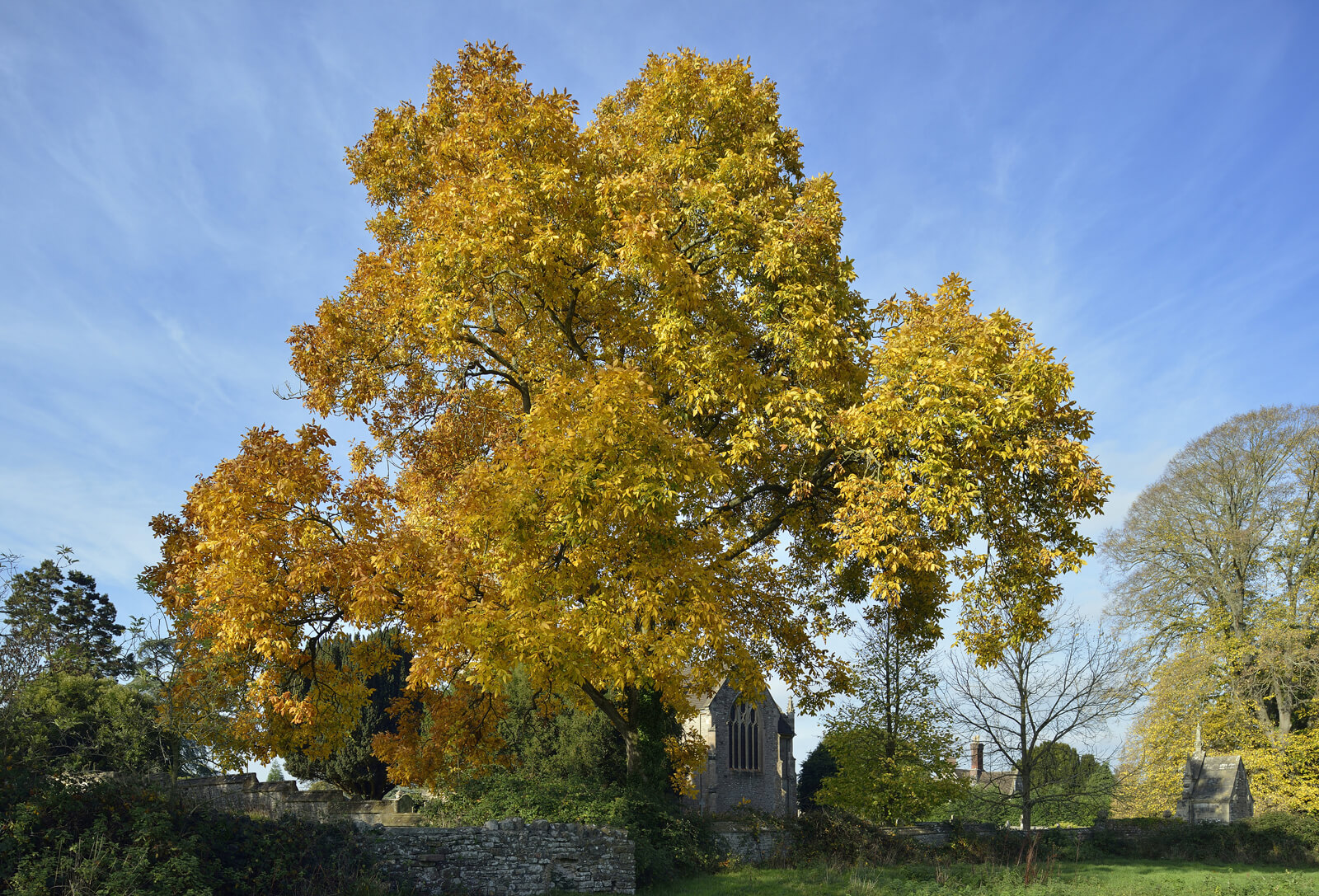
- Hickory trees are a type of hardwood deciduous tree that grows in temperate regions. They are part of the Carya genus within the Juglandaceae family.
- Native to places like China, India, the USA, and Mexico, these trees are known for their long leaves that grow in opposite pairs.
- The bark of hickory trees has a unique feature: it peels off as the tree ages, making it easier to determine the tree’s age.
- Hickory trees can grow tall, ranging from 60 to 80 ft, and sometimes even up to 120 ft.
- Their wood is valued for its hardness and density, making it ideal for various uses such as flooring, bows, and ski bottoms.
- Additionally, hickory trees produce edible nuts with a hard shell and a woody husk, known for their sweet taste.
Willow Trees
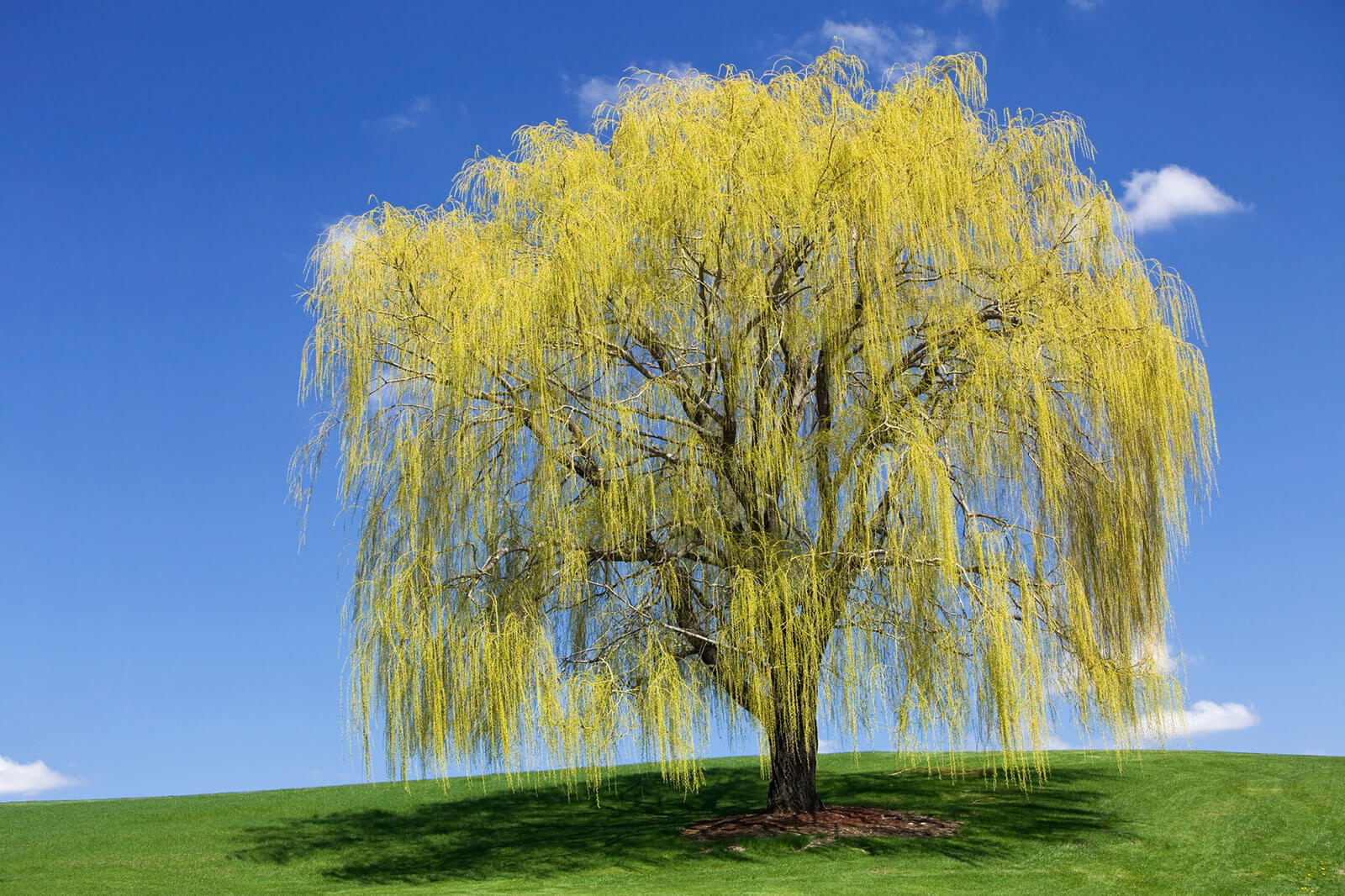
- Willow trees, part of the Salix genus in the Salicaceae family, are hardwood deciduous trees known for growing in cold, temperate regions with moist soil.
- These trees stand out with their long, thin, typically green leaves.
- They can grow quite tall, reaching heights of 45 to 70 ft.
- Willow wood is versatile and used for making various items like boxes, cricket bats, and furniture.
- A unique aspect of willow trees is their potential to grow very wide, sometimes as wide as they are tall.
- Additionally, willow trees are dioecious, meaning each tree has either male or female flowers, but not both.
Redbud Trees

- These are small to medium-sized deciduous trees, often resembling large shrubs.
- They belong to the Cercis genus in the Fabaceae family and are a symbol of Oklahoma. Redbuds can grow 25 to 35 feet tall and are native to eastern North America.
- Their bark is dark red-brown, smooth in youth, but becomes scaly with age.
- Redbuds are known for their attractive pink flowers, which come in various shades.
- Their leaves are heart-shaped, dark green, and grow alternately.
- Typically, redbud trees live for 50 to 70 years.
Sycamore Trees
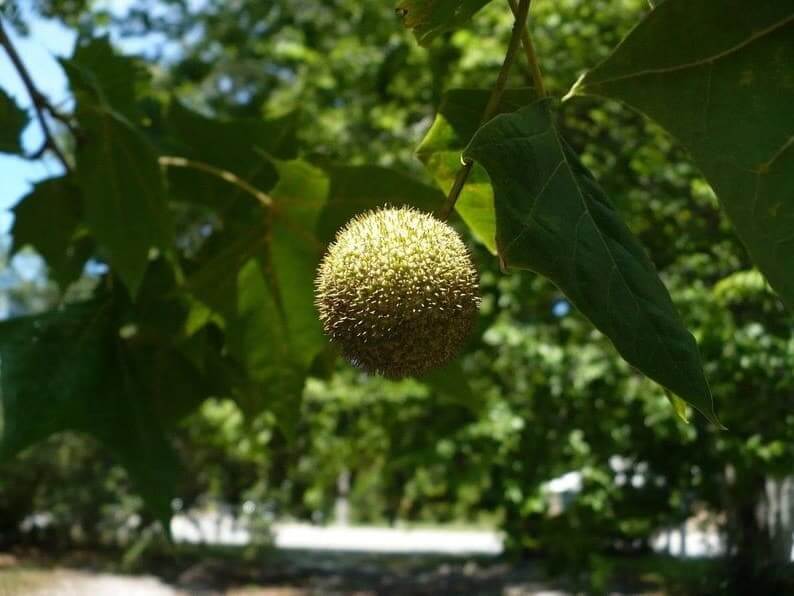
- These are also called American Sycamores and grow in the eastern and central U.S.
- They can get really tall, some up to 170 ft.
- Their bark is a reddish-brown color that peels off in different shapes, showing a white or yellow layer.
- The leaves are big with five parts and change to orange or yellow in fall.
- People like these trees for the shade they provide. Sycamores are also used to make things like boxes, crates, and furniture.
Juniper Trees

- Juniper trees, part of the Juniperus genus in the Cupressaceae family, are unique conifers.
- They’re smaller than typical coniferous trees and sometimes considered shrubs.
- These trees can reach heights between 66ft and 131ft and are known for their hard, sharp needle-like, or scale-like leaves.
- Junipers are found mainly in Europe, the UK, and the Northern Hemisphere.
- Remarkably long-lived, they can survive for 350-700 years, with some even older.
- Junipers are valued for their essential oil, extracted from juniper berries and used in various applications.
- Their wood, often referred to as “red cedar,” is popular for making furniture and shelves.
Walnut Trees
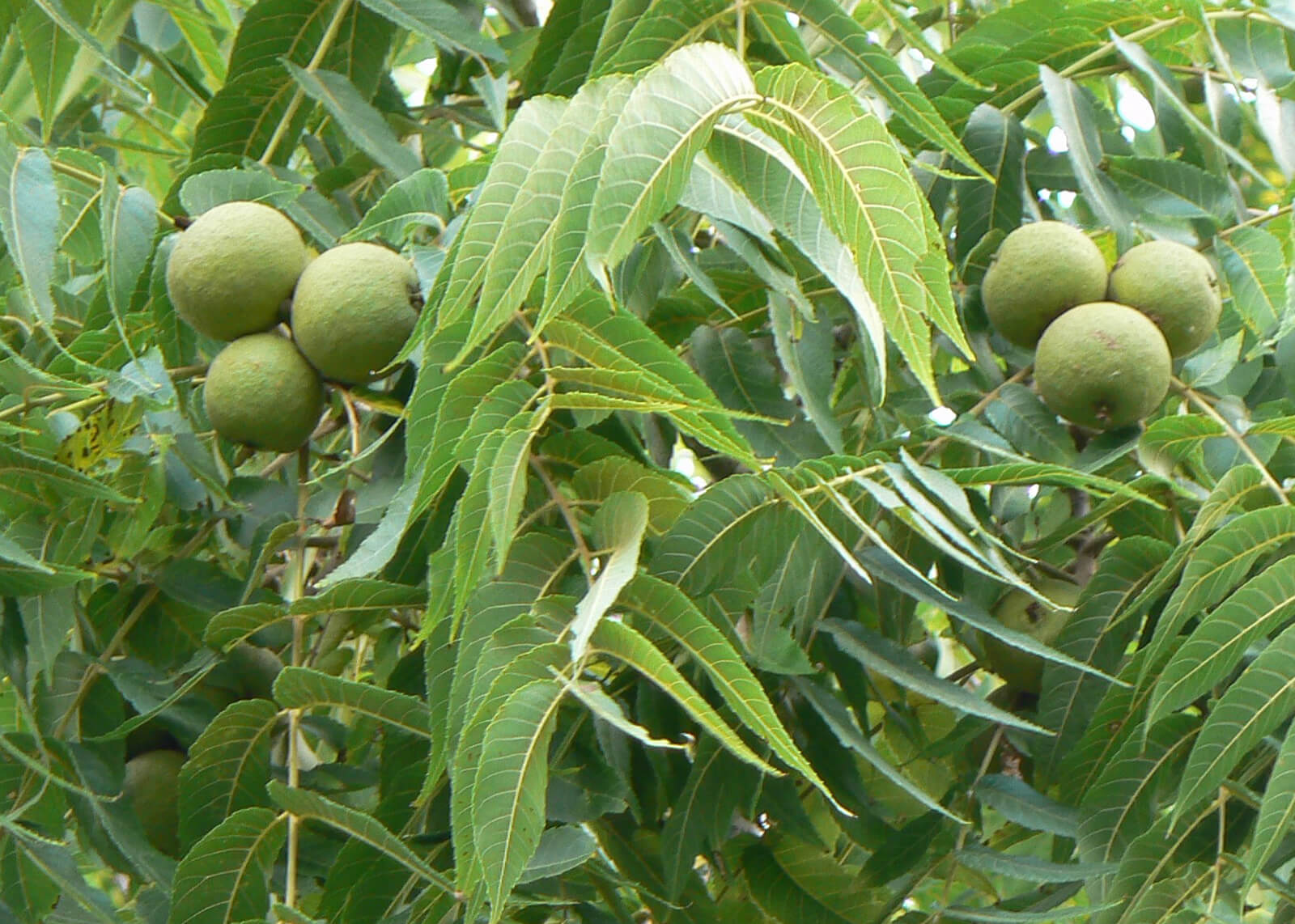
- These deciduous trees, part of the Juglans genus in the Juglandaceae family, are known for their edible nuts.
- Growing up to 50-70 ft tall, the main feature of walnut trees is their fruit, the walnut, which is popular worldwide and a key ingredient in many dishes.
- China is a leading producer of walnuts.
- Walnut leaves are pinnate, meaning they grow in a pattern on opposite sides of the branch, and turn brown or yellow in autumn.
- The bark of walnut trees is brown with rounded fissures.
- Typically, walnut trees live for 100 to 200 years.
Cherry Trees

- Part of the Prunus genus and Rosaceae family, cherry trees are native to Northern temperate regions, especially North America.
- They’re valued both for their delicious fruit and decorative appeal.
- Cherry trees come in deciduous and evergreen varieties.
- Their leaves are simple, alternate, and don’t have lobes.
- Typically, cherry trees are small, often growing between 20ft to 30ft, resembling shrubs.
- Their bark, greyish-brown to blackish with deep fissures, has medicinal uses.
- Cherry trees usually live for 50 to 150 years.
- Their wood is used for smoking meat due to its aromatic quality and also as firewood.
Mahogany Trees

- Mahogany trees, medium-sized and part of the Swietenia genus in the Meliaceae family, are native to South Florida, USA.
- They’re recognized as a threatened species there.
- Historically, mahogany was extensively used in shipbuilding and furniture due to its durability.
- It’s also prized for making musical instruments because of its excellent tonewood quality.
- These trees can grow between 98ft to 115ft tall. Their leaves are arranged opposite each other, with each leaf having 4 to 8 leaflets.
- Young mahogany trees have smooth bark which darkens and becomes furrowed over time. While primarily evergreen, some mahogany trees are semi-deciduous, shedding leaves in spring or autumn.
Teak Trees

- Teak, a tropical hardwood deciduous tree, grows mainly in South and Southeast Asia, including countries like India, Indonesia, Myanmar, and Malaysia.
- These trees can reach heights up to 131 ft and are a part of the Tectona genus in the Lamiaceae family.
- Teak trees are known for their small, fragrant white flowers and large, papery leaves.
- They produce wood that smells of natural oils and leather, and its water-resistant and sturdy nature makes it ideal for constructing boats and outdoor projects.
- Teak wood is also a popular material in expensive furniture making.
Eucalyptus Trees
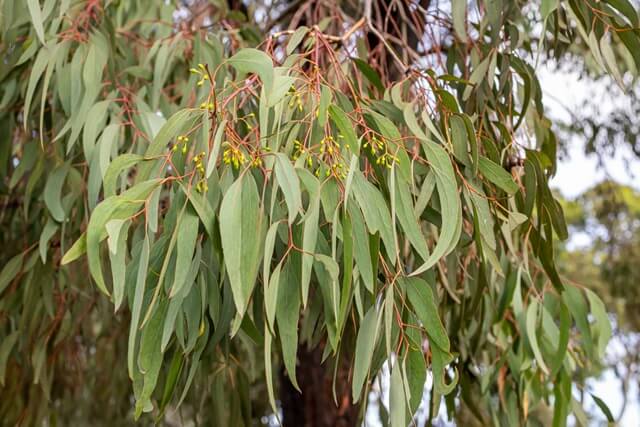
- Native to Australia, eucalyptus trees are a family of medium to tall trees in the Eucalyptus genus.
- They are known for their smooth, mostly white bark, which renews itself annually, shedding the old layer.
- The glossy green leaves of eucalyptus are rich in oil glands and grow alternately.
- These trees can reach great heights, often exceeding 60 meters (197ft), although not all achieve this size.
- Eucalyptus trees have gained global popularity, initially planted for pulpwood and now grown worldwide as cash crops.
- They provide valuable resources like firewood, furniture wood, and pulpwood, and have the ability to regrow after being cut.
Fir Trees
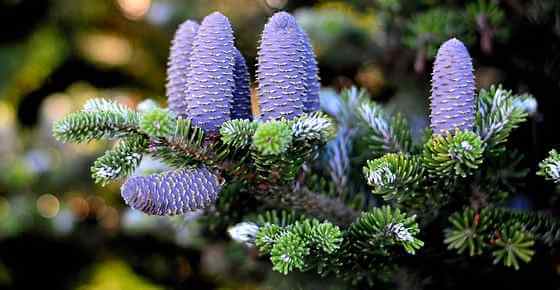
- Fir trees, part of the Abies genus in the Pinaceae family, are conifers found in North America, Europe, Asia, and North Africa.
- They resemble other pine trees but can be distinguished by their thin leaves that attach individually to the branches, resembling suction cups.
- Fir trees can grow exceptionally tall, up to 262 feet, and have a lifespan of about 60 years.
- The wood of fir trees is not highly durable, often used for plywood as it’s not resistant to water and insects.
- It’s not recommended for outdoor projects due to its quick deterioration.
Hawthorn Trees
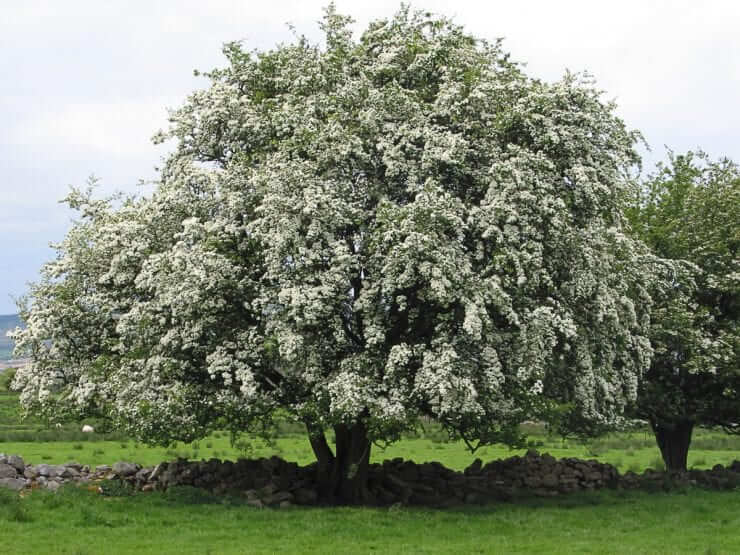
- Hawthorn trees, also known as quickthorn or whitethorn, are small deciduous trees or shrubs native to temperate regions of the Northern Hemisphere, including Europe, Asia, North Africa, and North America.
- They belong to the Crataegus genus in the Rosaceae family.
- The leaves of hawthorn trees are obovate, deeply lobed, dark green on top, and paler underneath.
- Young trees have smooth, grey bark, which develops shallow fissures as they age.
- Hawthorns are known for their thorns, making them unsuitable for climbing.
- These trees add diversity to the many types of trees found in various regions.
Conclusion
Types of trees can further be divided based on order, family, etc. But as mentioned earlier, it will take months, if not years, for you to grasp all of them. The trees mentioned above are beneficial for us in many ways as they provide us with wood for timber, fruits, and nuts as edibles and have some medicinal qualities.
Most of these trees are found in the wild, but the government, both the state and the central, and many private entities have come forward and planted these trees to enhance the quality of the area.
These types of trees can be found in different parts of the US and the world. Different types of trees have different characteristics. Coniferous trees have needle-shaped leaves and are very large. Maple trees are famous for their maple syrup. Apple trees are known for their fine wood.
Even though these trees serve our needs directly or not, we need to remember that they help us with our existence by balancing the ecosystem. Hence, we should think twice before felling trees recklessly.
Most of us do not cut the tree ourselves, but we are the engine that powers this phenomenon. We need to check our attitude towards things made of wood and make sure that we do not waste them needlessly.

